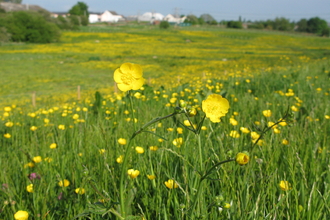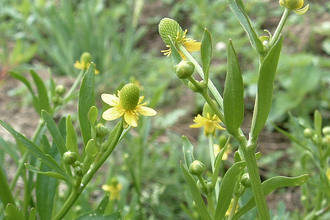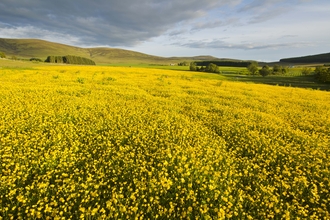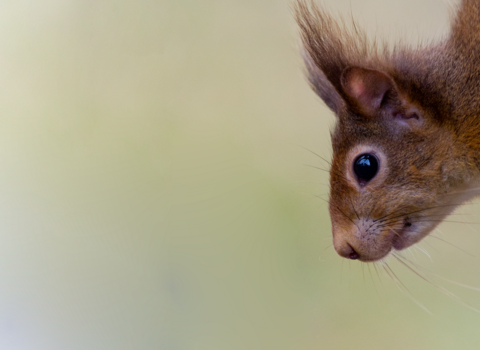©Philip Precey
Bulbous buttercup
The bulbous buttercup has the familiar butter-yellow flowers of its namesake, but grows from a bulb-like 'corm' (a swollen underground stem). Look for it on chalk and limestone grasslands, and along verges.
Scientific name
Ranunculus bulbosusWhen to see
March to MaySpecies information
About
The bulbous buttercup is a perennial herb that gets its name from its distinctive 'perennating organ': a bulb-like, swollen underground stem, which is situated just below the soil's surface.It becomes established where fresh soil is exposed, finding it hard to compete with taller, established plants. It prefers nutrient-poor, well-drained soils, and can be found on sunny, chalk and limestone grasslands, in particular. As its name suggests, it has familiar butter-yellow flowers that appear from March to May
How to identify
The bulbous buttercup has bright yellow flowers with downturned sepals underneath the petals. It has a hairy stem with a bulb-like swelling at the base, and leaves with three lobes.Distribution
Widespread.Did you know?
After the plant dies in summer, the 'corm' (the swollen stem) survives underground through the winter.The Wildlife Trusts manage many grassland habitats sympathetically for the benefit of all kinds of wildlife. Careful grazing with traditional breeds, hay-cutting at the right time and scrub clearance are just some of the ways grasslands are kept in good condition.




